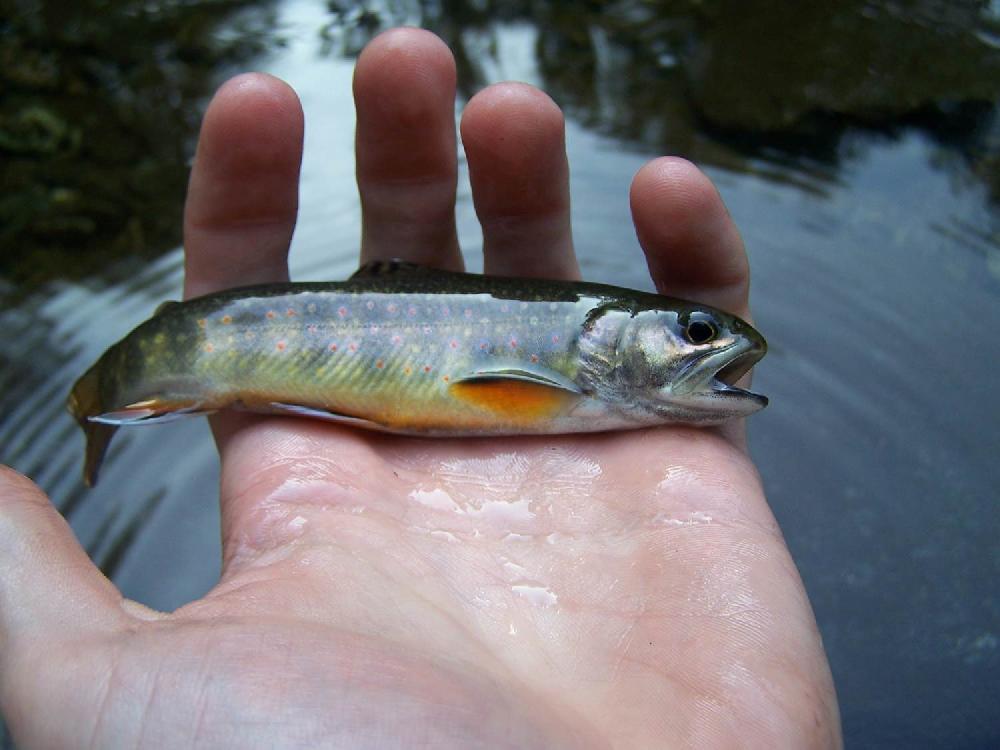This is the smallest member of the trout/salmon family in the Eastern USA. The native-born inhabitants display a vibrant coloration that is enhanced by chemicals absorbed from consuming natural foods in the wild.
A quite beautiful fish, they sport a dark olive colored back with somewhat lighter sides and belly. Their sides are spotted with black and red spots almost as large as the pupil of their eyes. The dorsal and caudal (tail) fins are rather mottled. Normally, they can also be identified by a lightened or white coloration on the front of all fins except for the dorsal.
Southern Appalachian brook trout are the only trout species native to the southern Appalachian Mountains and are genetically unique from brook trout found north of New River, VA. In the southeast, less than 5% of all areas formerly occupied by brook trout prior to European settlement remain.
The "brookies", as they are called by those most familiar, feed on small fishes and a wide variety of insects and other invertebrate animals that can be found in or on the surface waters where they live.
Though they have been recorded to grow to over 30 inches in length in some parts of the US, the Smokies brook trout rarely exceeds 10 inches and is sexually mature at a much smaller size than that. This is the result of inhabiting cool and infertile mountain waters. These conditions do not affect the health of the brookie, it just restricts their growth. On the positive side, it allows them to inhabit smaller areas of smaller streams.
Brook trout do well in clear, cool, well-oxygenated streams in the park. They have little tolerance for siltation or temperatures above the upper 60s F. Though they can tolerate some water acidity better than other trout species, they will quickly be eliminated from stretches of streams affected by acid rainfall, and thus the control of air pollution is critical to their survival.
Park Information:
Brook trout lost 75% of their former range in the park after prolific logging in the early 1900s left streams silted and degraded. Throughout the early part of the 20th century, non-native rainbow and brown trout were introduced to park streams to provide fishing opportunities. These trout quickly outcompeted and displaced native brook trout throughout many park streams. In the last 30 years, acid rain has further reduced trout populations at elevations above 3,000 feet due to low stream pH. Since 1986, park biologists have restored brook trout to 27.1 miles of 11 different streams in the park greatly expanding their range. These restoration efforts were made possible with support from hundreds of local volunteers and including volunteer groups such as Trout Unlimited, Federation of Fly Fishers, Friends of the Smokies, and local universities.
Current park fishing regulations, as of the writiing of this text in March 2015, include a 7-inch size limit, 5 fish possession limit and the use of single hook, artificial lures only.
References:
Etnier, David A. and Wayne C. Starnes. 1993. The Fishes of Tennessee. University of Tennessee Press. Knoxville, Tennessee.
Animalia
Chordata
Actinopterygii
Salmoniformes
Salmonidae
Phenology


